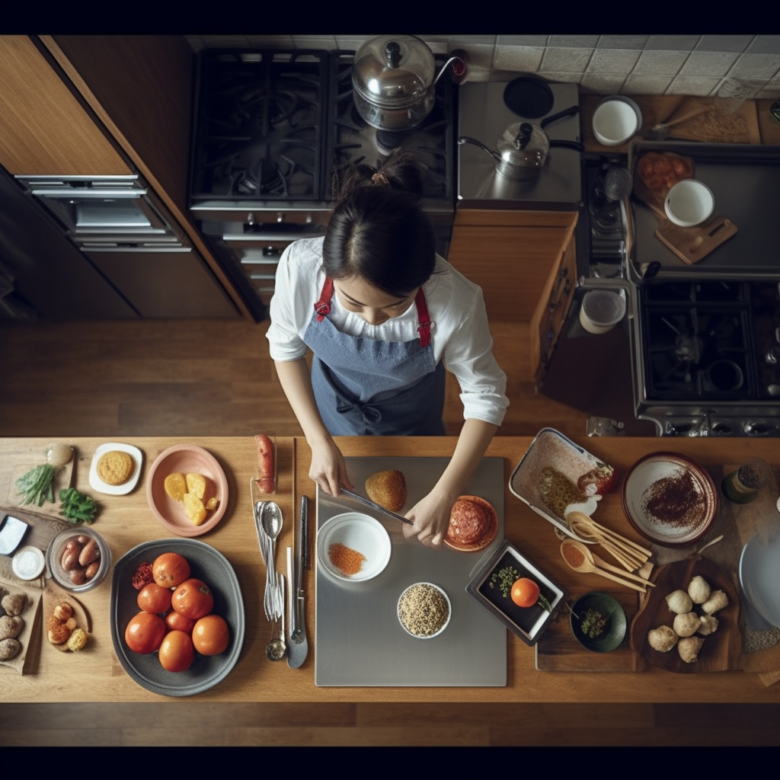In the heart of every kitchen, amidst the clatter of pots and pans, the sizzle of ingredients, and the aroma of culinary creations, lies a small yet indispensable tool – the kitchen timer. This unassuming device is a culinary ally that ensures your dishes are cooked to perfection. In this article, we’ll explore the first three essential use cases for timers in the kitchen.
1. Boiling Eggs: Precision in Simplicity
Boiling eggs might seem like a straightforward task, but achieving the perfect level of doneness can be a delicate balance. Enter the kitchen timer as your trusty companion.
Use Case: Soft-boiled or hard-boiled? It’s all about timing. For soft-boiled eggs with a runny yolk, set your timer for 4 to 5 minutes. If you prefer hard-boiled eggs with a firm yolk, aim for 9 to 12 minutes. The timer ensures that your eggs are just the way you like them, every time.
2. Baking Goods: The Art of Timing
Baking is a culinary art where precision is paramount. Whether you’re crafting cookies, cakes, or bread, timers play a vital role in achieving perfection.
Use Case: Imagine baking a batch of chocolate chip cookies. To achieve that delightful golden-brown exterior and a soft, gooey interior, set your timer for around 10-12 minutes at 350°F (175°C). The timer acts as your vigilant sentinel, alerting you when it’s time to savor your scrumptious creations.
3. Roasting Meats: The Quest for Juiciness
Roasting meats to succulent perfection requires careful monitoring of cooking times. Too long, and your meat becomes dry; too short, and it’s undercooked. A kitchen timer is your roast’s best friend.
Use Case: Picture a beautifully seasoned roast chicken. To ensure it’s cooked to juicy perfection, set your timer based on the chicken’s weight and the recommended cooking time per pound. The timer ensures that your roast emerges from the oven tender and flavorful, ready to delight your taste buds.
4. Steaming Vegetables: Maintaining That Freshness
Steaming vegetables is a healthy and delicious way to prepare greens, but it’s easy to overcook them, resulting in a mushy mess. Timers come to the rescue once again.
Use Case: Imagine a medley of vibrant, steamed vegetables on your plate. To maintain their crispness and vibrant color, set a timer for the recommended steaming time for each type of vegetable. The timer ensures that your veggies are perfectly cooked and ready to complement your main dish.
5. Simmering Sauces: Flavor Concentration
Sauces are the soul of many dishes, and their flavor development is a patient process. Timers help you achieve the perfect balance of flavors without overdoing it.
Use Case: Think of a rich tomato sauce simmering on the stove. To concentrate those luscious flavors, set your timer to remind you to stir and taste periodically. The timer keeps you in control, preventing the sauce from reducing too much or sticking to the pan.
6. Grilling Mastery: Savor the Sizzle
Grilling is an art form, and timing is everything when it comes to achieving that perfect sear and succulent interior. Kitchen timers ensure you don’t miss a beat on the grill.
Use Case: Picture a juicy steak sizzling on the grill. To cook it to your desired level of doneness, set a timer based on the thickness of the steak and your preferred doneness (rare, medium-rare, medium, etc.). The timer ensures your steak is grilled to perfection, with those beautiful grill marks and flavors.
These three use cases showcase how kitchen timers can make a significant difference in your culinary creations. Whether you’re steaming vegetables, simmering sauces, or grilling up a storm, timers keep you in control of the cooking process, ensuring your dishes consistently impress.
7. Marinating Magic: Flavor Infusion with Precision
Marinating is a culinary technique that involves soaking meat, poultry, or seafood in a flavorful liquid mixture. This process allows the food to absorb delicious flavors and become more tender. However, marinating requires precise timing to achieve the perfect balance of taste and texture.
Use Case: Imagine preparing a mouthwatering batch of chicken wings for a weekend barbecue. To infuse them with the right amount of flavor without making them overly mushy, set a timer for the recommended marinating time. Timers ensure that your marinated delights turn out succulent and bursting with flavor, ready to impress your guests.
Marinating isn’t limited to chicken wings; it’s a technique used for various dishes, including steaks, kebabs, and seafood. With the aid of kitchen timers, you can take control of marinating times, ensuring your culinary creations are a hit every time.
These seven use cases illustrate the versatility and indispensability of kitchen timers in the culinary world. Whether you’re boiling eggs, baking goods, roasting meats, steaming vegetables, simmering sauces, grilling, or marinating, timers play a crucial role in achieving perfection in the kitchen.
8. Poaching Eggs: The Art of Delicate Timing
Poaching eggs is a culinary technique that requires precision timing to achieve the perfect balance between a silky, runny yolk and a fully set white. Kitchen timers are your reliable companions in this delicate process.
Use Case: Visualize a classic Eggs Benedict brunch. To poach the eggs to perfection, set a timer for about 3-4 minutes. The timer ensures that your poached eggs have a lusciously runny yolk, ready to harmonize with the hollandaise sauce atop your English muffin.
9. Cooking Pasta: Achieving Pasta Perfection
Cooking pasta might seem straightforward, but it’s a fine balance between undercooked and overcooked. Timers ensure that your pasta turns out al dente, not mushy or too firm.
Use Case: Envision a hearty bowl of spaghetti. To achieve that ideal al dente texture, set a timer according to the pasta’s recommended cooking time, typically around 8-12 minutes. The timer helps you avoid overcooking and guarantees pasta perfection.
10. Frying Foods: Crispy Goodness Without the Guesswork
Frying foods, whether it’s chicken, fries, or donuts, requires precise timing to ensure they’re cooked to crispy perfection without becoming overly greasy or undercooked. Kitchen timers keep your frying game on point.
Use Case: Picture a batch of golden, crispy chicken tenders. To achieve that mouthwatering crispiness, set a timer for the recommended frying time, usually around 3-5 minutes per side. The timer ensures your fried delights are crispy on the outside and tender on the inside.
With all ten essential use cases explored, you now have a comprehensive understanding of the invaluable role kitchen timers play in creating delightful dishes. These humble devices empower you to take control of your cooking, ensuring that every meal you prepare is a masterpiece.



